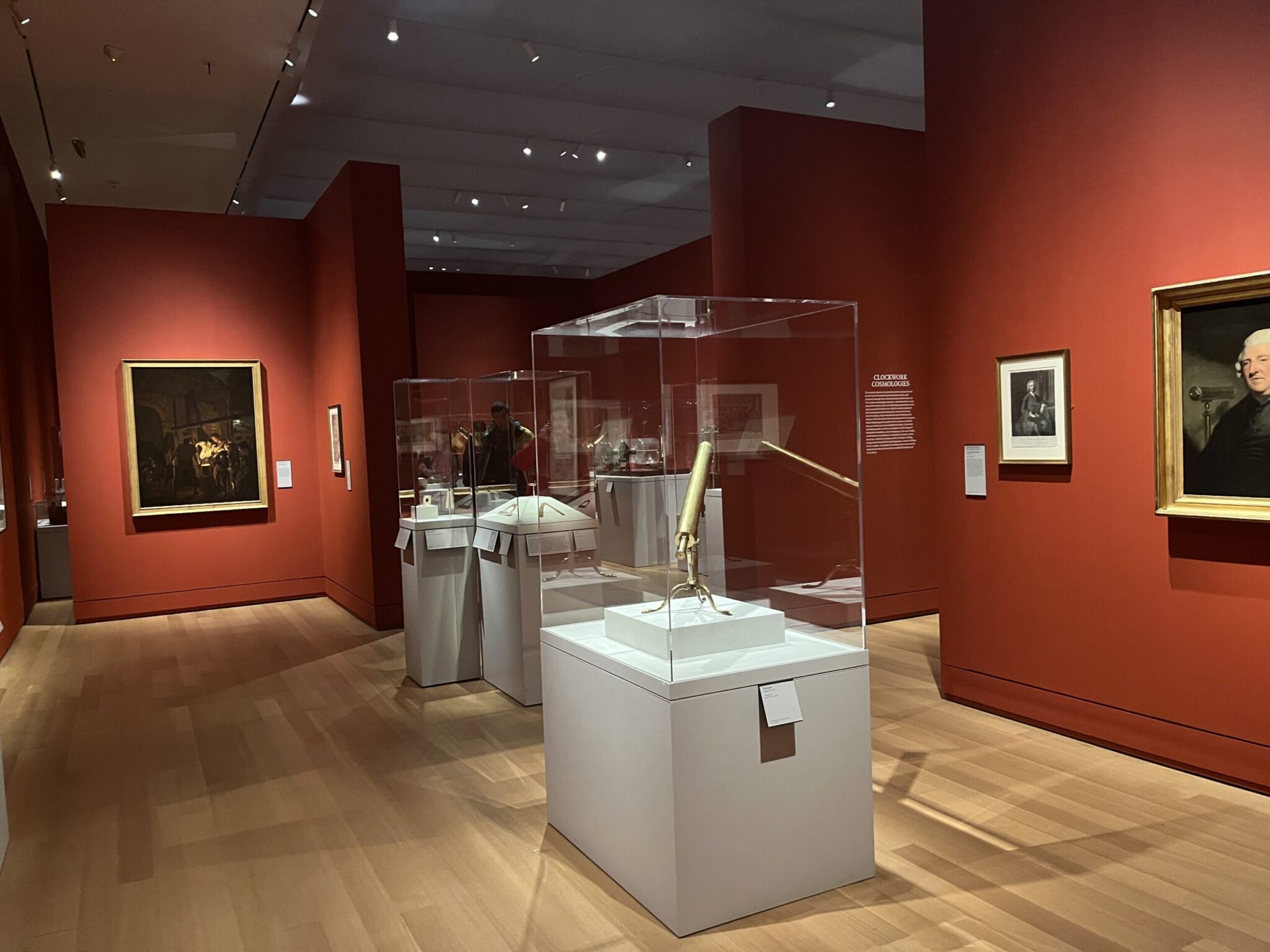YUAG exhibition aims to encourage new worldviews on old artifacts
Showcasing scientific objects from post-Renaissance Europe, the latest YUAG exhibition interrogates the colonial histories behind the artifacts’ decorative facades.

Samantha Liu, Contributing Photographer
The latest Yale University Art Gallery exhibition asks audiences to reckon with the violent origins of science in the West.
“Crafting Worldviews: Art and Science in Europe, 1500-1800,” which opened to the public on Feb. 17, portrays the intertwining of art, science and colonialism in the European past. Comprising nearly 100 relics of scientific discovery — globes, compasses, sundials, microscopes, anatomy textbooks — the exhibition draws from across Yale’s collections to put historical artifacts in conversation with each other. The scientific instruments in the exhibition belong to the Science and Science and Technology Collection of the Peabody Museum, which have never before been prominently displayed at Yale.
“It’s just such a gorgeous, immersive space with amazing artifacts,” said Rachel Dai ’26, who visited the exhibition on its opening day. “The curation really makes you want to stop and look at every object.”
The work of co-curators Jessie Park — assistant curator of European art — and Paola Bertucci — associate professor of history of science and curator-in-charge of history of science and technology division at the Peabody Museum — aims to illuminate both the artistic beauty behind each piece and their buried histories of exploitation and subjugation in an era rife with territorial expansion.
Bertucci, whose field explores the role of colonialism and slavery in scientific progress, noted how museums tend only to display scientific instruments as indications of artistic or scientific prowess. She wanted to create an exhibition which challenged the public to think about the broader power structures and discourses at stake.
“Crafting Worldviews,” an exhibition in the making for almost a decade, brings life to Europe in the seventeenth to nineteenth century. Borrowing from the Yale Peabody Museum, the Beinecke Rare Book and Manuscript Library, the Harvey Cushing/John Hay Whitney Medical Library, the Yale Center for British Art and the Lewis Walpole Library, the multimedia exhibition displays inventions, textbooks and decorative elements from an era of endeavors to decipher — and conquer — the natural world.
At the entrance of the exhibition, a mid-19th century cedarwood specimen box, formerly used to teach young children about “articles in common use,” contains natural specimens taken from Indigenous lands, as well as cloth and textiles spun from countries under imperial rule.
“We were not interested in characterizing these objects as technical marvels or as some sort of scientific relics to admire in awe,” Bertucci wrote to the News. “Together, the works on view show how science and art contributed to shaping conceptions of European superiority that had devastating consequences and whose legacy is still current.”
Park emphasized their attentiveness to selecting artifacts that are “beautiful and of high quality,” such that the accompanying texts could focus on exploring their historical contexts. The labels and introductory and section texts deliberately do not include words which call attention to the objects’ aesthetic beauty.
“We instead used those interpretative materials, as well as other means of display, to explicate European colonialism, its foundations and legacies,” wrote Park.
Bertucci expressed hopes that the exhibition will illuminate the “two-way relationship” between scientific discovery and colonial expansion: as new inventions enabled European conquest, new settlements brought wealth and knowledge into Europe, further driving scientific inquiry.
One section, “Worlds Seen and Unseen,” focuses on how European perceptions about non-Western civilizations became embedded in cartographic and written forms. The section features illustrations of subjugated peoples reimagined as monstrous, unfamiliar or altogether forgotten.
One engraved book from the seventeenth century depicts vibrantly-colored portraits of Dutch sugar plantations — while obscuring the masses of slave labor which propagated it.
“By foregrounding European colonialism, this exhibition also foregrounds the contributions of the enslaved and the Indigenous,” explained Bertucci. “We present them not only as the victims of brutal practices of dehumanization and dispossession, but also as individuals and communities whose knowledge, work, and lives were essential to the making and development of science in this time period.”
Park also drew special attention to the “Automaton Clock in the Shape of Diana on her Chariot,” a Renaissance clock in ornamental gold and ebony. Made in 17th-century Germany for royalty to enjoy, the piece serves as a warning against hedonism, according to its label, marking “worldly desires ending with the pursuit of time.”
The clock is part of the section called “Clockwork Cosmologies,” which showcases timepieces alongside astrolabes, mills and planetary models. The section is meant to depict gear-driven inventions which ascribed mathematical order onto the Earth and, by extension, hierarchy onto its people.
“These objects highlight the contributions of individuals and groups that are often erased in official accounts on the history of science and art: from women and children working in artisanal workshops to enslaved Africans or Indigenous individuals who provided guidance and information to traveling European naturalists,” wrote Bertucci.
In her statement to the News, Park expressed wishes that visitors will embrace “the lens of ‘both/and’” as they regard the objects’ conflicting meanings.
“We want visitors to scrutinize the objects, criticize them, and reflect on the realities from which they were produced, while still appreciat[ing] their beauty,” Park wrote.
“Crafting Worldviews” runs from Feb. 17 to June 25.







